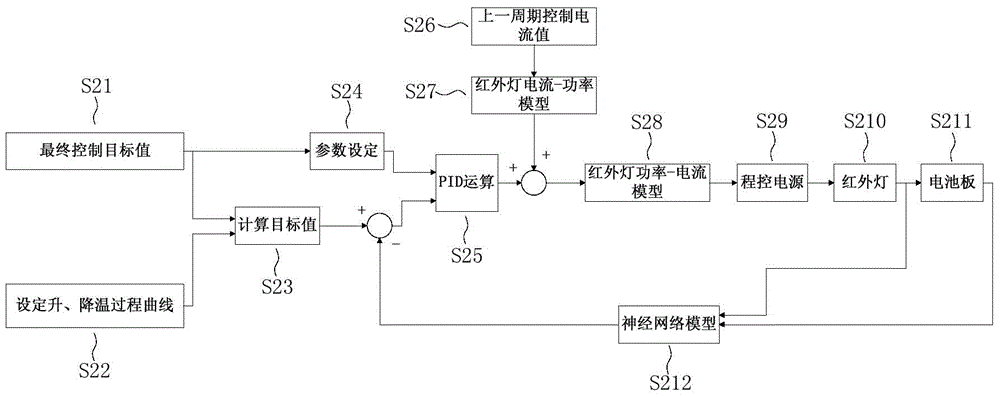A method for controlling the temperature of a solar panel
A temperature control method and technology for solar panels, applied in the direction of temperature control, non-electric variable control, control/regulation system, etc., can solve the problems of control overshoot, control overshoot and oscillation, strong hysteresis, etc. Good effect of regulation and uniform temperature
- Summary
- Abstract
- Description
- Claims
- Application Information
AI Technical Summary
Problems solved by technology
Method used
Image
Examples
Embodiment
[0043] The control system of the battery panel thermal vacuum test temperature control method disclosed by the invention is as follows: figure 1 shown, including:
[0044] Step S11: Set the control target value and the heating and cooling rate.
[0045] Step S12: Calculate and obtain the working current of the infrared lamp through the control algorithm.
[0046] Step S13: Adjust the output current of the programmable power supply according to the working current of the infrared lamp calculated in step S12.
[0047] Step S14: The programmable power supply drives the infrared lamp array, and applies corresponding heat flow to the surface of the battery board.
[0048] Step S15: The surface temperature of the solar panel changes due to the influence of the heat flow output by the infrared lamp array.
[0049] Step S16: Due to the change of the surface temperature of the battery panel, the corresponding physical quantity of the temperature sensor fixed on the surface changes. ...
PUM
 Login to View More
Login to View More Abstract
Description
Claims
Application Information
 Login to View More
Login to View More - R&D Engineer
- R&D Manager
- IP Professional
- Industry Leading Data Capabilities
- Powerful AI technology
- Patent DNA Extraction
Browse by: Latest US Patents, China's latest patents, Technical Efficacy Thesaurus, Application Domain, Technology Topic, Popular Technical Reports.
© 2024 PatSnap. All rights reserved.Legal|Privacy policy|Modern Slavery Act Transparency Statement|Sitemap|About US| Contact US: help@patsnap.com










